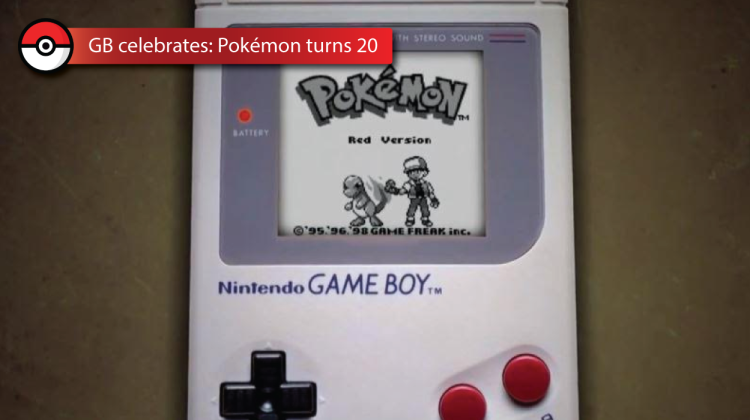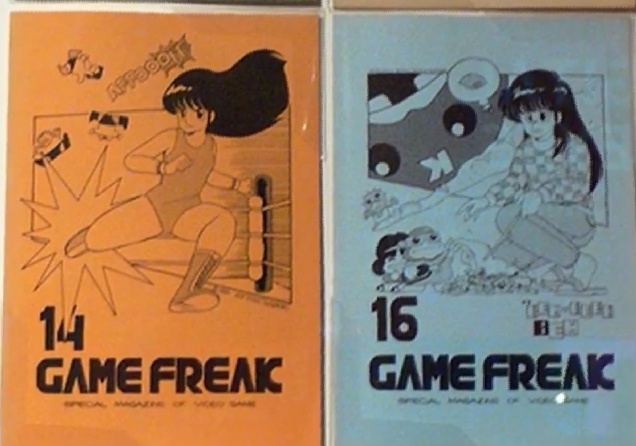Pokémon is a multimedia giant, but it all started with one man.
That would be Satoshi Tajiri, who created developer Game Freak and the initial idea that would become one of the biggest gaming franchises of all time, which celebrates its 20th anniversary this week. Sales for the series has reached over 200 million, but Pokémon’s popularity extends to a children’s cartoon that’s been running since 1997 and a collectible card game.
Of course, Taijiri — who is currently 50 (yup, he did the whole thing Pokémon in his late 20s/early 30s) didn’t create the franchise alone . A lot of credit also goes to Ken Sugimori, the artist who made the designs for all of the original creatures. Still, just looking at Tajiri’s credits for the original games makes it clear that it was his project more than anyone’s. He was the director, game designer, scenario designer, and map designer. He’s also a bit of a reclusive man, which might explain why his name isn’t as well know as, say, Mario creator Shigeru Miyamoto’s (who served as a mentor to Tajiri). Even if you look online, you’ll have a hard time finding a picture of Tajiri, who many describe as eccentric.
Tajiri originally created Game Freak in 1981 as a fanzine that covered Japan’s gaming scene (which means, much to my delight, he was a gaming journalist, like me). Sugimori also worked on the fanzine. In 1989, the two would turn Game Freak into a developer, making small games for the Nintendo Entertainment System like Quinty and Mendel Palace.
In 1990, Tajiri saw the Game Boy and the link cable, which allowed two of the portables to sync up for multiplayer. Tajiri, however, thought of a game that would use the cable to allow players to trade with each other instead of focusing on competition. He drew on his love of collecting bugs as a child, and soon Game Freak had the basis for Pokémon (originally called Capsule Monsters while in early development).
Nintendo approved of the concept and agreed to publish the game. However, development took a long six years, with Pokémon not coming out in Japan until 1996. At that point, many considered the Game Boy a dying system, and few expected much success from Pokémon.
“They [Nintendo] didn’t expect much from the game,” Tajiri told Time in a rare interview back in 1999. “Game Boy’s popularity was declining. Just when I finished the game and took it to Nintendo, I felt like a baseball player who slides into second base even though you know you’re going to be out, but then it turns out you are safe.”
However, it quickly became a big hit not just in Japan, but it also resonated in the U.S. when it finally made it over here in 1998.
Part of that success was thanks to a secret Pokémon that sparked thousands of playground rumors.
“There were 150 characters, and Mew was number 151,” Tajiri told Time. “You can’t ever get a Mew without trading for it. It created a myth about the game, that there was an invisible character out there. Someone gives me Mew, then I give Mew to you, then you pass it on. Introducing a new character like that created a lot of rumors and myths about the game. It kept the interest alive.”
Of course, we can’t give creidt to Tajiri for everything. The series mascot, Pikachu, was a joint creation of the creature design team, lead by Sugimori. It wasn’t even Tajiri’s decision to make him the mascot.
“When they did the anime, they wanted a specific character to focus on. Pikachu was relatively popular compared with the others and potentially both boys and girls would like it,” Tajiri told Time. “They heard a lot of opinions about this. It wasn’t my idea.”
According to the fan-run Pokémon wiki Bulbapedia, Tajiri’s favorite Pokémon is actually Poliwag.
Tajiri still works at Game Freak and oversees development of the main Pokémon games. While none of his other games ever matched Pokémon in popularity (and really, what could?), he deserves recognition as one of the most important designers in history for his work in bringing the series — one of the most recognizable and popular in all of gaming — to life.
VentureBeat's mission is to be a digital town square for technical decision-makers to gain knowledge about transformative enterprise technology and transact. Learn More




